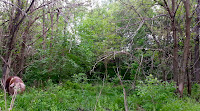Podcast: Play in new window | Download
Family, farm, and the job in town … that is the balancing act that many farmers have to juggle these days whether you are just starting your farm or you have been farming for years. According to this document from the USDA (which has lots of interesting data) 60% of todays 2.1 million family farms had less than $10,000 gross sales and 30% of the farms had between $10,001 and $249,999 of gross sales. If you dig a little deeper you will find that nearly all of those “60%” farms lost money on their farming business, and of those farms in the “30%” while they did make a farm profit it was less than $10,000. Plus, they still received the vast majority of their income off farm. I can’t wrap my mind around all of those numbers and I’m sure there is much I’m missing … what I do know though is that the majority of farmers in the United States are balancing a job in town and the job of the farm.
By no means have I mastered the balancing act! It feels like I’m always dropping a ball somewhere, but there are a few things I have learned over the past five years that are important to keep in mind when you are mixing your family … your farm … and your job in town.
Six Keys to the Balancing Act
- Work Just Needs to Be Done – Having a job in town and a farm job is having two full-time jobs in most cases and that means the work of two full-time jobs.
- There are Some Things You Can’t Do – Sacrifices are part of the game when it comes to starting your farm and you have to be able to say no to certain things.
- Involve Everyone in as Much as Possible – When you are working together you can not only get things accomplished, but you can also have some great family time with lots of teachable moments.
- Let Get Aways Happen – Maybe you all can’t get away for a day or two, but make sure that you don’t miss out on everything because you may regret it in the future.
- Some Projects Need to Be Done Now and Others Can Wait – There are things that need to be done daily regardless of what is going on, but allow yourself to stop and focus on more important things.
- Be Sure Everyone is 100% On Board With the Farm – If the whole family isn’t 100% invested in making the farm happen there will be an underlying stress that is just not worth creating … no matter how badly you want to farm.
In the farm update section of the episode a spend a little bit of time sharing about how awesome our customers are that brave the rain and cold to come to the farmer’s market! If you have a customer base you need to make sure that you are continually thanking them for the support (financially and emotionally) that they give you. We really couldn’t do this farm without their help in more ways than one!
Do you have any keys to balancing family, farm, and the job in town? I would love to be able to make this “Top Six List” into a “Top Ten List”. If you have any advice for me (and the other listeners) on how you balance everything and accomplish the the projects that need to be done please leave a comment below or e-mail me.
**Special Note :: Because iTunes and Blogger were not playing nicely I now have a different feed for the podcast episodes. You can find a The Beginning Farmer Show specific feed at this link if you use an rss reader. I hope this also helps with some download problems others had been having as well.**













Join the Community